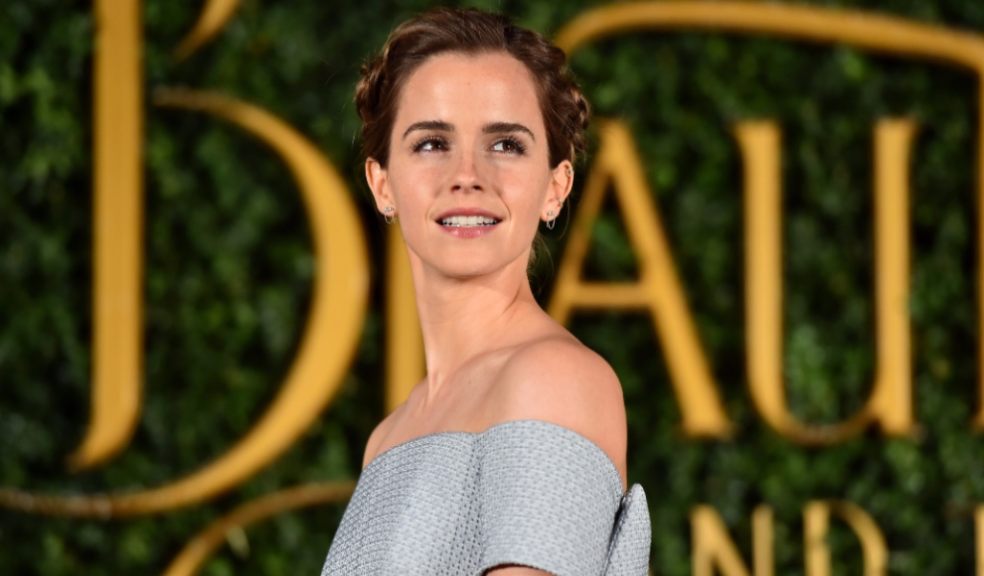
I tried Emma Watson’s favourite eco-friendly fashion app and here’s what happened
Emma Watson is arguably one of the biggest sustainable fashion advocates on the planet right now, and when it comes to making better fashion choices, she’s become a go-to source for great ideas and advice.
So, I was naturally intrigued when Watson revealed her love for app Good On You, which helps her decide which fashion brands to support.
The 29-year-old actress told fans on Instagram that the app is her “benchmark” when it comes to sustainable fashion, as it gives her reassurance that her clothes “do not harm our precious planet or its people.”
I’ll be the first to admit that my fashion choices haven’t always been environmentally-friendly in the past.
I’ve been drawn in by trends and fast-fashion brands, but after watching the Andrew Morgan documentary The True Cost (which details pollution, waste and human rights abuses in the fashion industry), I’ve been trying to take steps to better my shopping habits.
Curious to see what Good On You would reveal about my wardrobe, and whether it could change the way I shop, I decided to download it and give it a go…
How does the Good On You app work?
The free app is super simple to use and works by rating the environmental impact of the brands in your wardrobe, helping you make informed decisions when it comes to spending your money.
I start by downloading the app, creating my profile and setting my country preferences.
The app then brings up a search function that allows you to type in a brand name and instantly see a summary of how ethical the company is, detailing their policies and practices.
Each brand has an easy-to-glance-at rating out of five – one being ‘we avoid’ and five being ‘great’. Good On You says it uses its own data, as well as certifications from Fair Trade and Global Organic Textile Standard and reports from NGOs like Greenpeace to create its ethical rating system.
Good On You takes into account lots of different factors, including how brands impact workers across the supply chain (including policies on child labour, forced labour, the right to unionise and living wage payment), plus their impact on the planet and use of animal products like fur, angora and down feather.
Some brands have low scores because they don’t provide enough public information for the team to truly know what happens in their supply chains, so they can’t be ranked highly.
Alongside ethical summaries of numerous of high street and luxury brands, the app also has lots of interesting content and articles, ranging from sustainable shopping guides to deep dives into ethical issues like leather and plastic.
What did it teach me about my wardrobe?
To find out more about my individual fashion footprint, I rifle through my clothes and make a list of every label that appears in my wardrobe. This way, I can get an overview of where I’m shopping the most. (Note: if you’re already considering a shopping ban, this task will make you realise you have more clothes than you’ll ever need.)
Turns out my top four brands are: Zara, Topshop, Cos and H&M.
I start by plugging Zara into the app, and check out their eco-credentials. The app rates the Indetex brand as ‘It’s a start’, which basically means they’re making good progress in one or more of the main issues the app considers, but still has a long way to go.
There’s also a breakdown of the retailer’s fashion footprint, covering the good, the bad and the ugly.
For instance, Good On You say that, while Zara is a member of the Better Cotton Initiative, it claims it’s lagging when it comes to ensuring payment of a living wage in its supply chain.
Overall, Good On You note that, while Zara has good policies to eliminate hazardous chemicals, it believes it creates short-lived, fast fashion products that aren’t great for the planet.
One of the things I love about the app is it has a really handy feature that brings up similar brands that have been rated ‘Great’. It suggests shopping at these brands as an alternative, if you’re unhappy with a specific retailer’s policy.
For instance, the app suggests I check out People Tree – a brand I know and love – as well as Byem and Zola Amour, two labels I’d never heard of before, but am now keen to discover.
Verdict: did the Good On You app change my shopping habits?
I’m disappointed but not surprised to find that all of my top four ‘most worn’ brands have the ‘It’s a start’ rating – which basically means they’re trying, but could be doing so much more to support the environment, animals and their workers.
Seeing brands rated in this way has really opened my eyes to the companies that have the kind of ethical values I want to align myself with, as well as those that don’t. Now, instead of being drawn in by fancy advertising and influencer marketing, I’m trying to shop based on which brands have the best policies – seeing my money as a marker of support.
With so many retailers shouting about individual policies, it’s hard to be an informed shopper – in the past it would take hours of trawling through websites and fine-print. The Good On You app does the hard work for you and reads between the seams of brands.
It’s also introduced me to some amazing ethical brands that prove you don’t have to sacrifice style when you’re shopping sustainably. If you’re planning to shop with a better conscience this year, this decade, I highly recommend giving it a go.
Picture: (Matt Crossick/PA)













